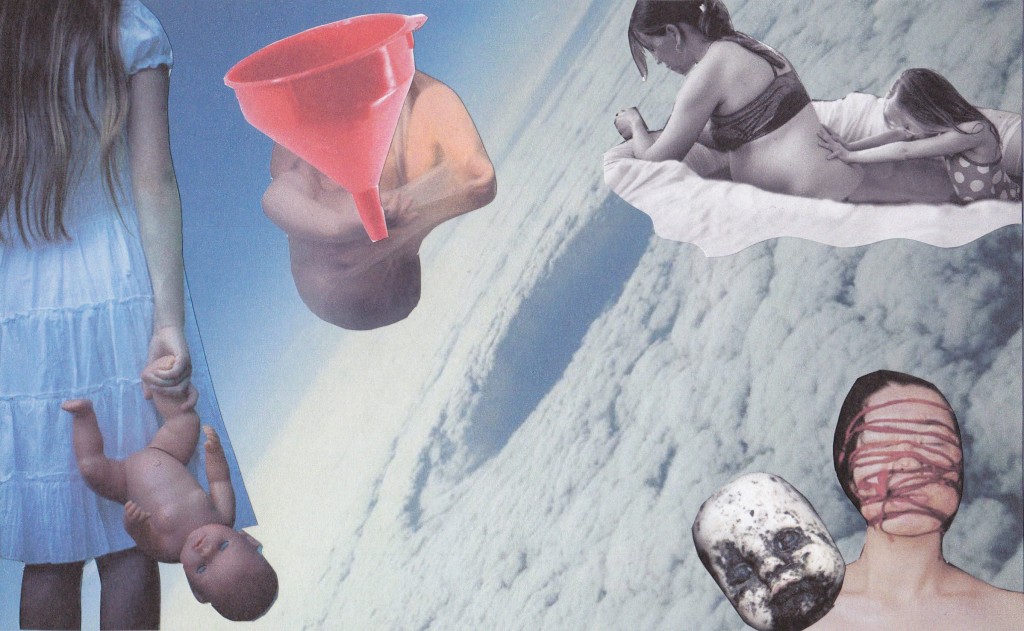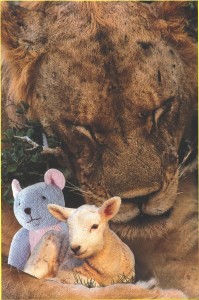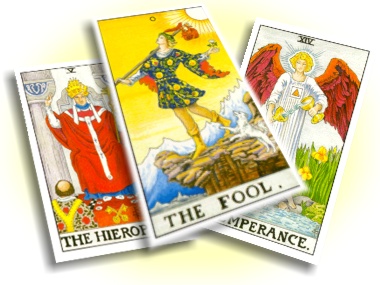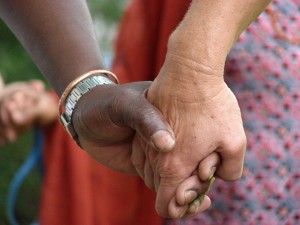I don’t know why I was so shocked and disappointed recently when looking for a location to hold a SoulCollage® group and I came upon an organization’s Executive Director who was less than thrilled at my proposal. I was articulate and professional in my email, sharing my passion and my desire to start groups, to build community with targeted people (caretakers of special needs children and adults in this case). Hey, if I’m this passionate about SoulCollage® then people should respond to me in positive ways, right?
I came out of western evangelical Christianity, so I should have known. But I just didn’t remember that some people, particularly people with a tightly held religious ideology, could be uncomfortable and even fearful about SoulCollage®. I understand and respect that SoulCollage® isn’t for everyone. But in defense of my own integrity, I need to share this with intention of bringing clarity to the issues.
So here’s what happened: In my excitement I naively provided the link to the SoulCollage® website to the ED (a non-profit, non-church org) for further investigation, as I focused my introduction email on providing a very brief overview of SoulCollage®, and spent more words sharing my goals and qualifications. I thought I was being professional and helpful in suggesting the ED could explore the site if more information was needed.
If you’ve ever ventured on to the SoulCollage® website then you might recall that in the upper right hand corner there is a link that offers you a “personal card reading.” I’m not sure why that is there, because honestly, if someone is stumbling onto the front page, or they have a link and are curious about SoulCollage®, they likely aren’t going to understand how to do a reading. And veteran SoulCollagers® who know how to do readings likely have their own cards to draw from, or are in a group and can draw from their group members.
But anyway, unfortunately, in a reply email it became evident to me that the notion of “card reading” created the discomfort: “I notice that your classes involve card reading. I think that some of the techniques you would be using would likely conflict with the values and belief systems of our primary partners in the space.” I hadn’t mentioned anything about this aspect of SoulCollage®, so I can only assume the ED visited the SoulCollage® site and came across the link for the personal card reading. I don’t know how much this ED investigated beyond that, but I can safely assume probably not much. I think it was a knee-jerk judgment, but negative first impressions are powerful and hard to negotiate, aren’t they?
I gave it a stab anyway. I wrote back a long, and again articulate response, providing a clearer picture of what a SoulCollage® reading would look like, and the purpose of such readings. I did get an apology for the “quick assessment”, and an offer to meet to discuss the feasibility of using their space for a SoulCollage® group. The email response from the ED went on to clarify: “The term card [reading] is an old term typically used when referring to mediums, tarot cards and new age mystic techniques of inner seeing. The verbage on your sight leans in that direction and I made an assumption.”
I understand. (But just for the record, amongst friends here, what other “seeing” is there besides “inner seeing”? 😉 )
Anyway, the meeting I was offered never materialized because there was no further response from the ED after I suggested a specific day/time from the available options I was given. My guess is my lengthy response outlining what SoulCollage® really is prompted further investigation on the SoulCollage® website, which turned up words like “oracle”, and “inner wisdom”, and “Soul Essence”, and these are words that apparently hold people in fear enough that they’re not willing to collaborate on efforts towards community and individual healing.
Although I am new to the facilitator aspects of SoulCollage®, I am certain my experience is not new. I am sure many others before me have been met with the same resistance, fear, and maybe even hostility. So my intentions here are not to drag anyone through the mud, but to clarify what a SoulCollage® card really is, and what a reading may look like.
But first let me give you a little background.
Seena Frost, the founder of SoulCollage®, provides us a clear mission statement for SoulCollage®:
“The intention of SoulCollage® [is] to offer a creative practice for exploring, healing and evolving our many-faceted Souls so every Soul is able to manifest its unique SoulEssence in increasingly balanced and joy-filled forms.”
Seena studied theology and holds a Master’s of Divinity from Yale Divinity. She went on to earn an M.A. in psychology, as working with people in a more inclusive way has been her life’s calling. But she clearly comes from a background of faith. It’s no surprise then, as Seena admits herself, that Carl Jung, and more broadly, depth psychology influenced her development of the SoulCollage® process. Depth psychology is one of the only psychological paradigms that intentionally includes concepts of Soul in it’s framework.
Carl Jung, the famous protégé of Freud, spent his life diving into the depths of his own psyche in attempt to understand Self and the human condition. Jung said, “We need more understanding of human nature, because the only real danger that exists is man himself . . . We know nothing of man, far too little. His psyche should be studied because we are the origin of all coming evil.”
But Jung also understood that within us we have the potential for good as well: “The unconscious is not just evil by nature, it is also the source of the highest good: not only dark but also light, not only bestial, semihuman, and demonic but superhuman, spiritual, and, in the classical sense of the word, ‘divine’.”
In trying to understand human nature in a precise way Jung followed in the path of Socrates, who infamously said, “The unexamined life is not worth living.” Indeed.
While examining the depths of his own psyche Jung experienced a personal hell of sorts, wrought with frightening visions, and the darkness that he termed the Shadow. Over the course of several years Jung recorded these very personal experiences in a journal, and in 2009 this was published as The Red Book. Through this process Jung arose victoriously, with a deeper sense of himself and a tremendous wisdom. He went on to write and speak extensively about his earned understanding of symbolism, imagery, the personal unconscious, and the archetypes of the collective unconscious. But of his personal experience he wrote (Jung on Active Imagination, Confrontation with the Unconscious):
“I was frequently so wrought up that I had to do certain yoga exercises in order to hold my emotions in check. But since it was my purpose to know what was going on within myself, I would do these exercises only until I had calmed myself enough to resume my work with the unconscious. As soon as I had the feeling that I was myself again, I abandoned this restraint upon the emotions and allowed the images and inner voices to speak afresh. The Indian, on the other hand, does yoga exercises in order to obliterate completely the multitude of psychic content and images. To the extent that I managed to translate the emotions into images- that is to say, to find the images which were concealed in the emotions- I was inwardly calmed and assured. Had I left those images hidden in the emotions, I might have been torn to pieces by them.”
(If you have any further interest in this, I highly recommend this excellent videotaped symposium on The Red Book).
Although Seena admits to being influenced by many sources, and not just Jung, Jung’s experience with his own unconscious and the expression through imagery resonates deeply with my own experience of the SoulCollage® process.
Let me give you an example:
 This is a card I made last year, which I titled, Preverbal Universe. Aesthetically, it’s not my favorite and I experienced some technical frustration creating it, as it didn’t entirely match my vision for what I was trying to express. (I am much more intentional and Jungian in my approach to SoulCollage® than Seena suggests). In general, what this card represents for me is my own work with healing some very early childhood wounds- stuff that occurred before I understood verbal language, and which engrained itself into the deepest parts of my unconscious.
This is a card I made last year, which I titled, Preverbal Universe. Aesthetically, it’s not my favorite and I experienced some technical frustration creating it, as it didn’t entirely match my vision for what I was trying to express. (I am much more intentional and Jungian in my approach to SoulCollage® than Seena suggests). In general, what this card represents for me is my own work with healing some very early childhood wounds- stuff that occurred before I understood verbal language, and which engrained itself into the deepest parts of my unconscious.
Have you ever had that experience when the emotion is so gut-wrenchingly raw, and so vast that you feel like you could be swallowed by it, so powerful that it overcomes you, and so deep that you don’t even know where it came from or what it’s about? I’ve been working on healing this for a few years now, after years as a devoted Christian utilizing prescribed methods consistent with that religion failed to heal me. (Who told you that healing can only come a certain way- is not God the God of all, and is He not capable of using many means of healing?)
So here is what a basic SoulCollage® card reading might look like for this card, if I drew it:
- I am one who is not of this world, who IS a divine soul, incarnating for a purpose.
- I am one who has been wounded.
- I am one who has been bound by the constraints of my conscious mind, who has been tied to concepts of healing which have limited effectiveness.
- I am one who is bravely digging for deeply buried treasures.
- I am one who is laboring, re-birthing myself anew.
It’s not as difficult to do a card-reading on one’s own card, at least for me, because I have clear intent on what the card represents. Personally, I prefer to draw cards from other people in the group because it offers me a chance to dive back in and look for associations with the imagery that are fresh, or need to be re-visited in a different way, from a different angle (or a different constellation, as Jung might say). So now I’ll share what a card reading might look like using one of the random cards from the SoulCollage® site:
 This is titled Trust, by Sue Volpi Gelber. It is in her Committee Suit. Her own reading, as provided: “I Am One Whose separation from God is the hardest work in this world. I have it in me to sit here right now and just rest.”
This is titled Trust, by Sue Volpi Gelber. It is in her Committee Suit. Her own reading, as provided: “I Am One Whose separation from God is the hardest work in this world. I have it in me to sit here right now and just rest.”
Can you relate to that? I sure can! But pretending I haven’t read her own reading, and am seeing this card fresh, bringing my own Self to it, here is my reading today:
- I am one who has a vulnerable, innocent side.
- I am one who has a child in heart.
- I am one who is loved, cared for, and protected.
- I am one who is safe, and doesn’t need to fear.
Powerful stuff.
Now, there are other types of readings, some with multiple cards, which invite a deeper insight, or encourage exploration of a particular issue or question the reader may have. Say, for example, I did a three card reading using my own cards, and I had a question: “Am I supposed to be a SoulCollage® facilitator?” If my Preverbal Universe is a card I drew in the three card spread, I wouldn’t read it with the same “I am the one who…” per se, because it embodies an energy in it’s whole. It speaks to me about wounding, but healing, about things I had no control over, and things I do, about transitioning, moving forward, redefining myself. So what might this particular card speak to me about my question? It might tell me that it’s all about process, evolution, dying and being reborn again and again, and so it doesn’t matter really, because right now I’m moving ahead in facilitating SoulCollage® groups, and it’s good. Maybe in the future I will need to let it go and rebirth something else, but for now, the process is good. Now, I have two others cards, each with their own energies, which will speak to me about my question and offer additional insight.
I hope you can see how a SoulCollage® card reading does not offer new information, provide the answer from some esoteric source, or steer one away from their faith, but can actually remind her of it, and point her to it.
But just to be clear, the difference between a SoulCollage® card reading and say a tarot card reading is that the SoulCollage® cards don’t have a specific assigned meaning. To the creator they may, but no one knows the meaning except the creator, and the meaning is assigned new by an individual reader, as just demonstrated in my reading of a card that wasn’t mine. My reading was very different than Sue’s reading, and both of us may have different readings of the same card as we evolve. This is consistent with Jung’s understanding of the symbols we create. In the Images of Emotion, Dr. Welsh writes: “The significance of an image can be recognized by how they are actually ‘representing an inner reality which often far outweighs the importance of external reality’ (Jung, 1921/1990, p. 442). The images are a combination of unconscious material and conscious awareness at any particular moment in time.”
This wouldn’t be the case with a tarot card, which has a more fixed archetypal meaning. So another difference is that tarot is often used as a means to indicate past or future energies/situations, whereas SoulCollage® is used more as an expression of NOW in terms of the reader’s unconscious processing.
In truth, though, many people do not understand the most fundamental aspect of tarot- that they are archetypes, symbols representing our universal human experience. Tarot cards are not far off from Jung’s ideas, and Jung was not unfamiliar with tarot cards. The purpose of tarot has been defined: “The symbolism of the Tarot can provide an insight into the events and feelings in your life, guidance when we need to make decisions; not answers, but another perspective on your situation. The art of Tarot divination is a way of using your intuition to gain a better understanding of not only your life, emotions and feelings, but also those of others who are important in your life.”
 Let’s take The Fool card, for example. Analysis of this card suggests, “The setting of this card is under a bright sun and a golden sky. Front and center is a garishly dressed young traveler, complete with his (or her) possessions wrapped in a small sack tied to a stick. He is dressed in brightly patterned clothing as he skips along an isolated road at a high elevation. And speaking of this mountain path, it is quite the treacherous route. High above other mountainous, snow-capped peaks, The Fool is looking blissfully above, enraptured in his own reality; a small flower he no doubt recently picked is in his left hand. He is walking perilously close to a cliff and his only companion, a small dog, is energetically attempting to alert him to where he is headed. In some Tarot decks the dog has actually begun to pull The Fool back from his careless veering off the path. The Fool’s impractical clothing, chosen for its fashionable sense, is not the best choice for the mountain road on which he is walking. Everything about this journey seems to be impractical. He is more interested in the flowers and the exhilarating walk than in the possible disastrous fall that may await at the next step. He did not bring a watchdog, he brought a small companion valued for its appearance and yet this is the only thing that seems to be saving him from himself.”
Let’s take The Fool card, for example. Analysis of this card suggests, “The setting of this card is under a bright sun and a golden sky. Front and center is a garishly dressed young traveler, complete with his (or her) possessions wrapped in a small sack tied to a stick. He is dressed in brightly patterned clothing as he skips along an isolated road at a high elevation. And speaking of this mountain path, it is quite the treacherous route. High above other mountainous, snow-capped peaks, The Fool is looking blissfully above, enraptured in his own reality; a small flower he no doubt recently picked is in his left hand. He is walking perilously close to a cliff and his only companion, a small dog, is energetically attempting to alert him to where he is headed. In some Tarot decks the dog has actually begun to pull The Fool back from his careless veering off the path. The Fool’s impractical clothing, chosen for its fashionable sense, is not the best choice for the mountain road on which he is walking. Everything about this journey seems to be impractical. He is more interested in the flowers and the exhilarating walk than in the possible disastrous fall that may await at the next step. He did not bring a watchdog, he brought a small companion valued for its appearance and yet this is the only thing that seems to be saving him from himself.”
This is an archetypal scene that represents something we can all relate to. Six hundred years after the creation of the tarot cards, we can still understand what the fool is. Jung would call this understanding our collective unconscious. It transcends geography, religion, language, culture, time, gender. Every human being holds and archetype of the fool.
So taken as individual cards tarot cards have something in common with SoulCollage® cards, as both represent archetypes projected from the individual and collective unconscious. But where they diverge is in the reading process and fixed nature. With tarot, as far as I understand it, in the spread of the cards there are specific positions that represent specific points in time (past, present, future), or specific constructs (outside influences, past influences, etc.), and each tarot card represents a single archetype. So while both SoulCollage® and tarot readings can be similarly used to provide guidance and/or perspective, the rigidity of the tarot method (the singular meaning of the individual cards and the assigned value to each position the card falls in) makes it very different from SoulCollage®. There is much more fluidity, creativity, and individual expression in SoulCollage®. Each SoulCollage® card is unique, and each reader assigns their own experience, insight, and wisdom to the card. Therefore each card contains a limitless possibility for interpretation of meaning.
I understand that some people see tarot as a means of divination that somehow tests God or causes one to rely on the method instead of their faith, and they would likewise equate the SoulCollage® card reading process with a form of divination because some types of readings attempt to answer specific questions, which seems to lead the reader away from God (the Scriptures). But again, I believe this is a misunderstanding of SoulCollage®, as each card is uniquely created by an individual. If a person’s Christian faith is an important part of her life she’s likely to create many SoulCollage® cards which represent various aspects of this. One could say that the Bible itself is full of archetypal images, metaphors, and universal teachings. This is ripe for SoulCollaging®. A person making cards centered around these values would be drawing cards centered around these values, or reading these types of values in other’s cards. So there’s no way for the SoulCollage® process to be occultish, unless the collager herself assigns such a meaning to the cards. Take for example Sue’s card that was randomly provided from the reading. The lion and the lamb, her own reading of her card- all lend to a Biblical imagery and paradigm.
So the discomfort some people have with SoulCollage® readings may come down to the idea of divination. Such a person may say, “All answers are in the Bible and it is all we need.” We have to be honest with ourselves and one another- we are living, breathing, experiencing human beings with a great depth to us. It’s legitimate to have emotions, as Jung so boldly embraced, and also to have questions. Not all of these questions can be answered through a single means. Perhaps a question for a reading might be, “I’ve been praying for months, reading the Bible, going to church. I still don’t feel peace. How can I find peace within myself?” Drawing on her own cards, the cards she has created which reflect her Biblical view, the reader may gain a more nuanced insight into this for herself.
All that being said, I hope that I have provided enough insight into this discussion that it’s evident that SoulCollage® in it’s essence is a spiritual practice, but one which values the individual as uniquely created, yet within the oneness of all creation. It promotes the ethical considerations of spirituality, but does not discriminate on the basis of religion. It is ecumenical in its philosophy, holding perhaps a chaplaincy model of spirituality rather than an evangelical model. This is what I love the most about SoulCollage®- there is room at the table for everyone, no matter their personal beliefs, and all are honored through the SoulCollage® process. In this way, SoulCollage® serves more than the individual, but holds the potential to heal and unite communities. After all, wasn’t this the second greatest commandment of Christ: to love your neighbor as yourself?
Language is an interesting thing, because it does define our conscious/ego reality. So, just to shed light, according to the Merriam-Webster online dictionary:
Oracle:
1
a : a person (as a priestess of ancient Greece) through whom a deity is believed to speak
b : a shrine in which a deity reveals hidden knowledge or the divine purpose through such a person
c : an answer or decision given by an oracle
2
a : a person giving wise or authoritative decisions or opinions
b : an authoritative or wise expression or answer
Divination:
1
: the art or practice that seeks to foresee or foretell future events or discover hidden knowledge usually by the interpretation of omens or by the aid of supernatural powers
2
: unusual insight : intuitive perception
Occult:
1: not revealed : secret: hidden from view : concealed

